Our mango coloring pages are an educationally delightful way for kids and adults alike to explore their artistic side. Bursting with vibrant hues and varied shapes, these pages offer a fun and informative way to learn about one of the most beloved fruits in the world. This article introduces a range of mango-themed coloring pages that cater to different age groups and skill levels, providing a simple yet engaging activity for anyone looking to add a splash of color to their day.
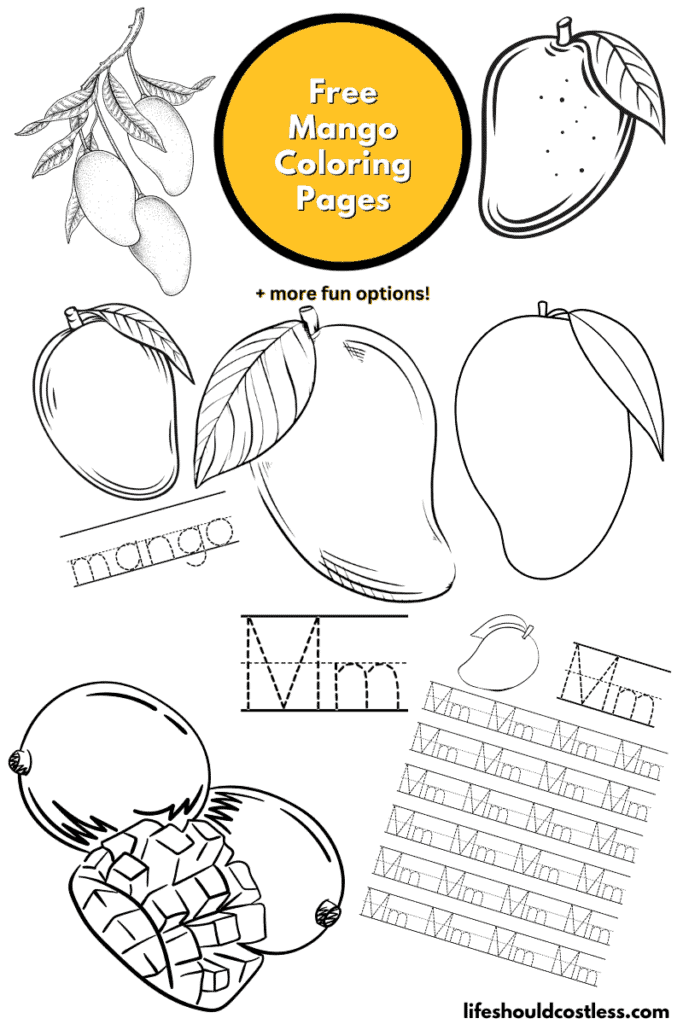
Choose your favorite design, download the free PDF template, print it out, and have fun coloring as much as you like.
You can also use these patterns for embroidery or as inspiration for intricate line tattoos.
Mango facts
If you’re exploring my coloring pages for the first time, I’m excited to offer you not just a fun activity, but also an educational experience.
I provide information about each coloring subject, making it easy for you to turn your coloring session into a learning opportunity. Let’s get started!
Here are lots of fun and interesting facts about mangos:
- Origin: Mangoes are believed to have originated over 4,000 years ago in South Asia. They have been cultivated in India for thousands of years.
- Symbolism: In many cultures, mangoes are a symbol of love and are believed to grant wishes.
- Variety: There are over 500 varieties of mangoes worldwide. Each variety has its own unique taste, color, and texture.
- Mango Tree Longevity: Mango trees can live to be over 300 years old and still bear fruit.
- National Fruit: Mango is the national fruit of India, Pakistan, and the Philippines. It’s also the national tree of Bangladesh.
- Largest Producer: India is the largest producer of mangoes in the world, but most of its mangoes are consumed domestically.
- Nutritional Value: Mangoes are rich in vitamins, especially Vitamin C and Vitamin A. They also contain traces of vitamin E, vitamin B, and K.
- Culinary Versatility: Mangoes are used in a variety of culinary dishes – from sweet to savory. They can be made into juices, smoothies, ice cream, fruit bars, pies, and they are even pickled and in salads.
- Folklore and History: In ancient India, mangoes were considered a symbol of life (similar to the apple in Western cultures) and were often seen in mythology and religious texts.
- Stone Inside: The mango has a single flat, oblong stone in the middle that contains the seed.
- Flowering Season: Mango trees flower from December to April, with the fruits ripening around May to September, depending on the location.
- Mango Leaf Rituals: In India, mango leaves are often used in weddings and religious ceremonies as a sign of good luck.
- Medicinal Uses: In traditional medicine, parts of the mango tree (such as the bark, leaves, skin, and pit) are used for various medicinal purposes.
- Climatic Preference: Mangoes typically grow in tropical and subtropical climates and require a frost-free environment.
- World’s Largest Mango: The heaviest mango ever recorded was in the Philippines in 2009, weighing 7.7 lbs (3.5 kg).
- Propagation: Mangoes are usually propagated through grafting, which allows producers to ensure consistency in their fruit crops.
- Skin Contact Allergy: Some people may have a reaction to urushiol, the same chemical found in poison ivy, which is present in the mango skin.
- Popularity: Mango is known as the “king of fruits” in many parts of the world due to its widespread popularity and delightful flavor.
These facts highlight the rich history, cultural significance, and versatile uses of mangoes, making them more than just a delicious fruit.
We learned a lot, but there is definitely more to know.
If you would like to learn more about mangos, here are some other reputable resources to check out:
- https://en.wikipedia.org/wiki/Mango
- https://www.britannica.com/plant/mango-plant-and-fruit
- https://nutrition.org/mango-board-webinar/
- https://www.huffpost.com/entry/5-surprising-facts-about-_1_b_10860284
- https://kids.kiddle.co/Mango
- To see all of my free printables, go here.
- If you would like to see my index of free printable coloring pages, go here!
- All of my botanicals coloring pages are found here.
- Or, my other fruits coloring pages can be found here.
Coloring tips
Coloring pictures of mangoes can be a fun and relaxing activity.
Here are some tips and tricks to really make your mango coloring come to life:
- Study Real Mangoes: Before you start coloring, look at pictures of real mangoes. Notice the variations in color – mangoes aren’t just yellow, they can have shades of green, red, and orange.
- Blend Colors: Use a blend of yellow, orange, and green to create a realistic mango look. Start with a light base color (like yellow), and then add layers of other colors.
- Create Texture: Mangoes have a distinctive skin texture. Use light, circular strokes to mimic this texture in your coloring.
- Shading: To give your mango a three-dimensional look, add shading. Darken the areas where shadows would naturally occur, like the underside of the mango or where it curves away from the light.
- Highlight: Use a white pencil or a lighter color to add highlights where the light would naturally hit the mango, like on the top or the side facing the light source.
- Background: Consider the background. A simple background can make your mango stand out. You can use a contrasting color or create a simple scene like a tree branch or a basket.
- Use Different Mediums: Don’t limit yourself to colored pencils. Experiment with watercolors, markers, or pastels to achieve different effects.
- Practice Gradation: Practice transitioning colors smoothly from one to another. This is especially useful for mangoes as they often have a gradient of colors.
- Keep Pencils Sharp: Sharp pencils are crucial for detailing and getting into small spaces, especially for the mango’s stem and leaf details.
- Take Breaks: If you’re working on a detailed coloring page, take breaks to avoid hand fatigue and to come back with fresh eyes.
- Enjoy the Process: Remember, the goal is to enjoy the process of coloring. Don’t stress about making it perfect. Each coloring page is an opportunity to learn and improve.
By incorporating these tips, you can turn a simple coloring activity into an artistic endeavor, bringing the vibrant and lush essence of mangoes to your pages.
Options For Printing:
Letter M is for mango writing practice worksheets
*My letter M is for mango coloring sheet printables available here are specially created for classroom use.
They are the only printables on this page that can be used in public settings without needing written permission.
However, if someone inquires about their source, please direct them to the link of this post.
Thank you for your cooperation!
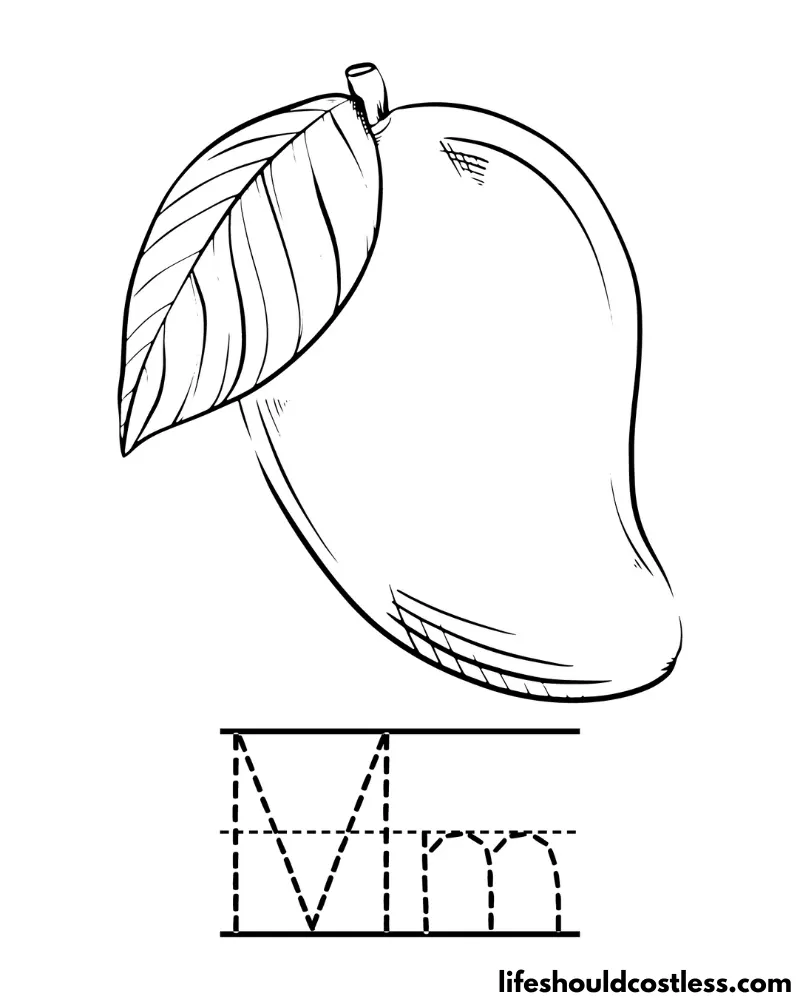

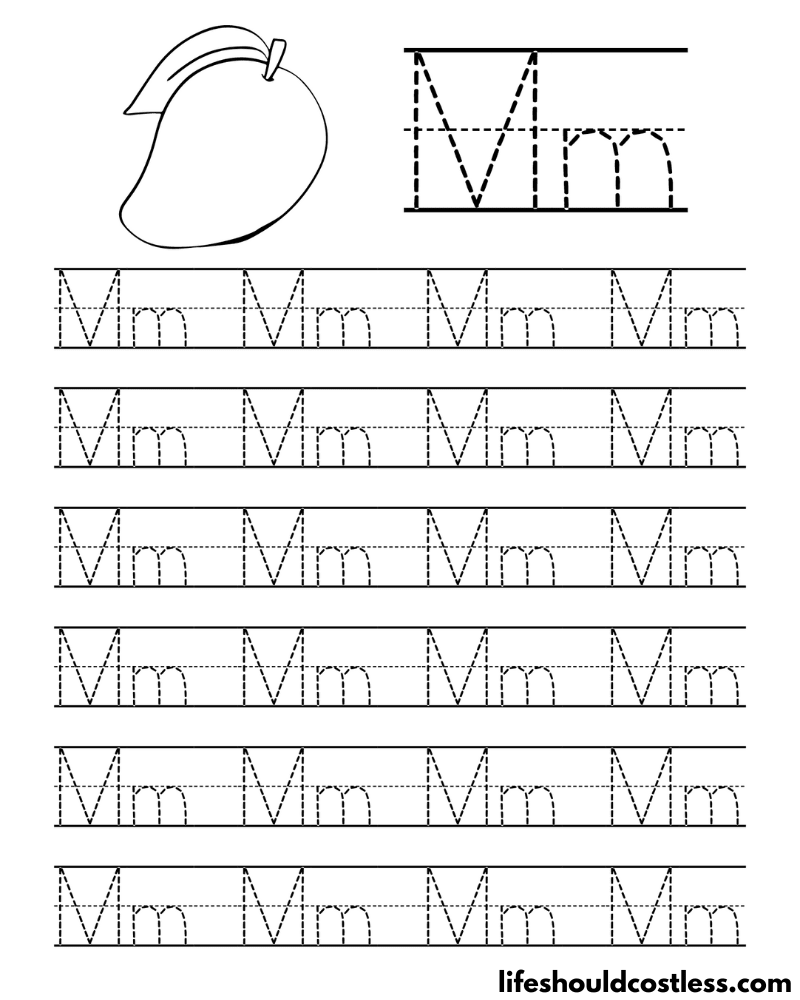
Various mango designs
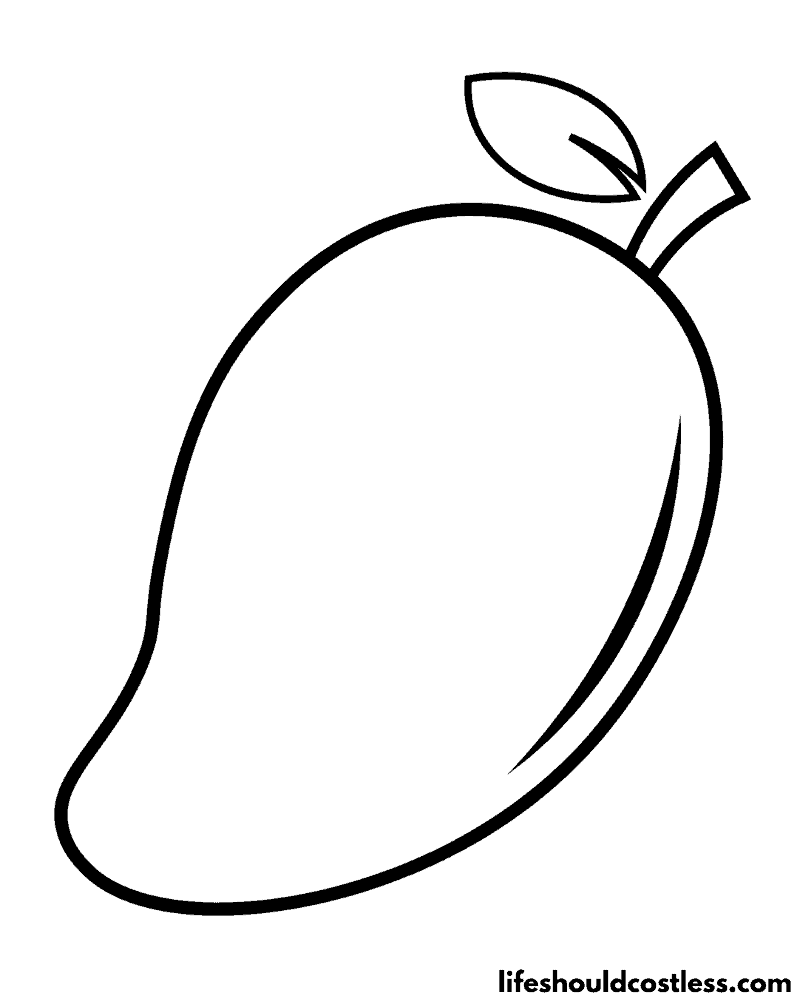
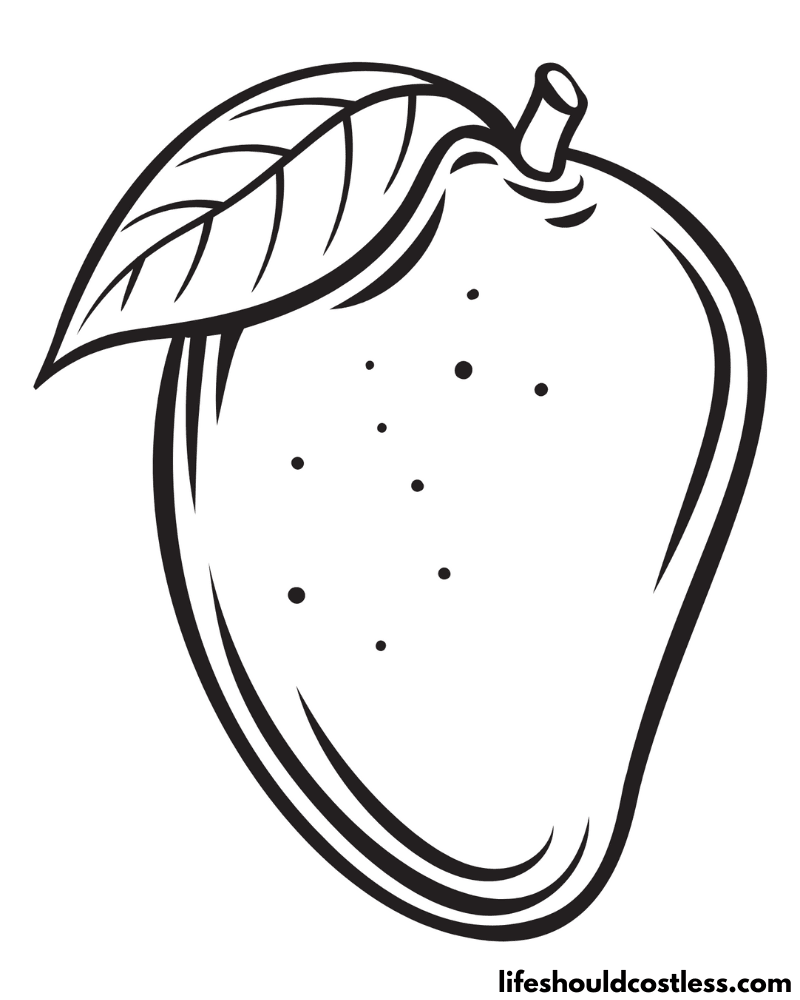
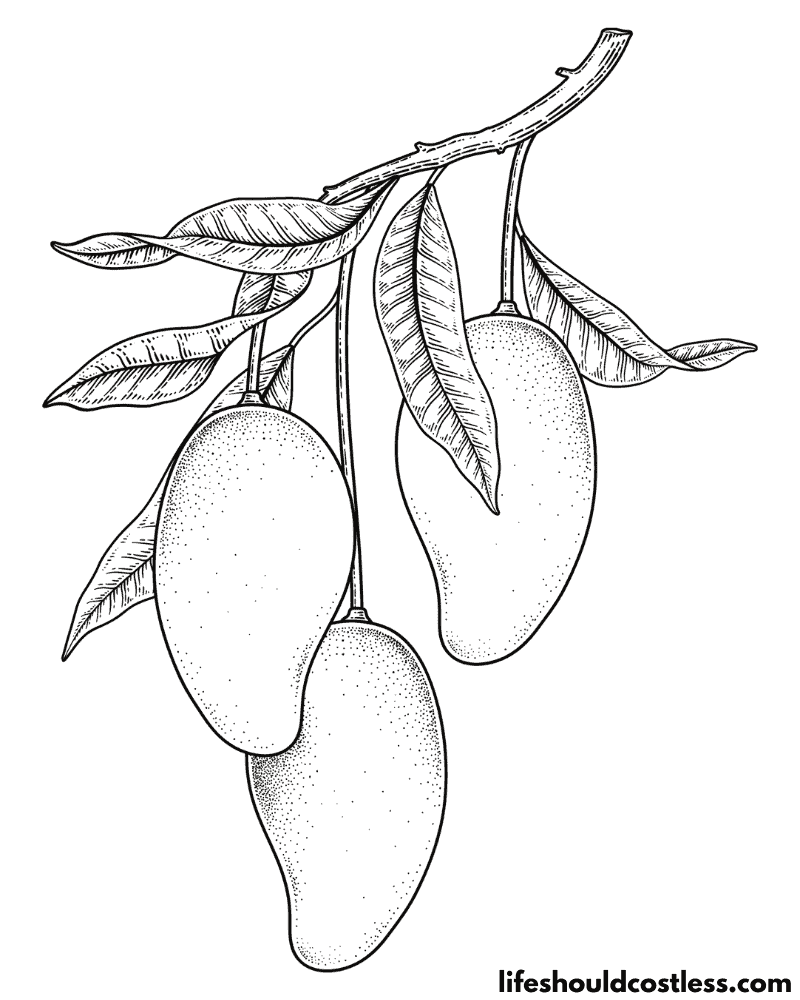



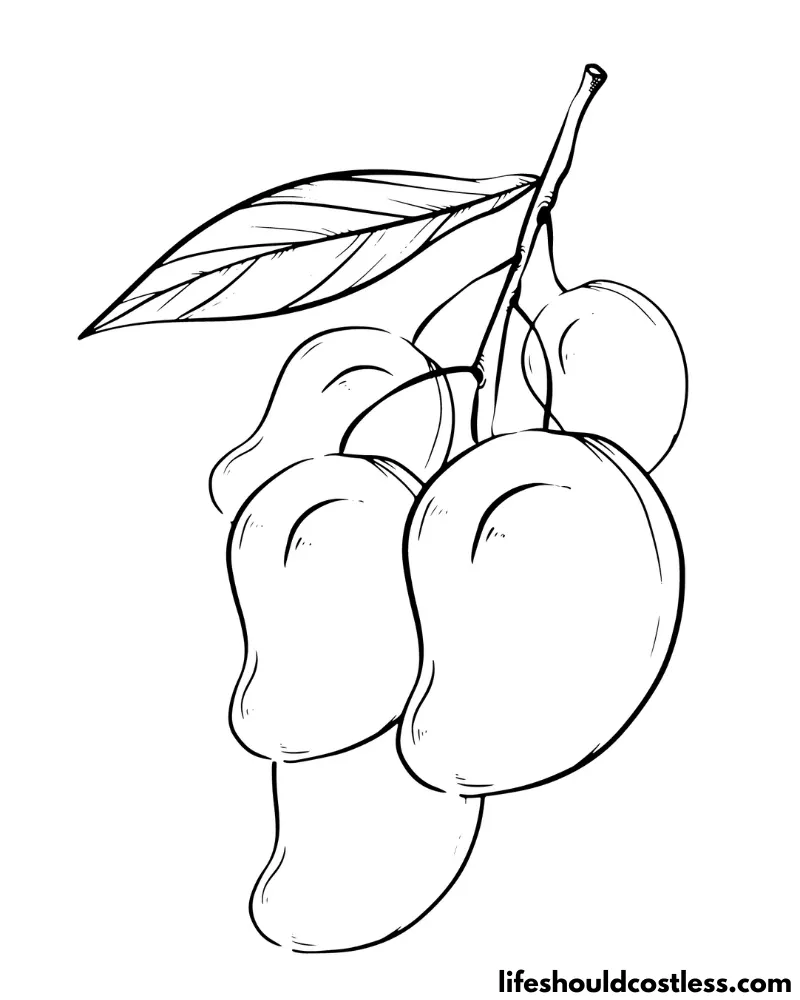
FAQ’s
Mangoes can display a variety of colors, often depending on their type and ripeness.
Here’s a basic list:
Green (usually when unripe)
Yellow
Orange
Red (often as a blush on the skin)
Golden
As mangoes ripen, their colors can change, typically moving from green to a combination of yellow, orange, and red.
*I will add more mango colour / color questions and answers as the questions get sent to me.
Conclusion
In conclusion, our mango coloring pages offer a wonderful blend of fun and learning, providing an opportunity for both children and adults to engage with art and nature.
These pages not only help in developing fine motor skills and color recognition but also offer a delightful way to explore the vibrant world of mangoes.
Whether used in classrooms, as a relaxing hobby, or as a tool for mindfulness, coloring mangos is a simple yet effective way to bring a touch of tropical warmth and creativity into your life.
So grab your colors, and let your imagination flourish with the rich hues and shapes of these exquisite fruits.
Happy coloring!
Thanks so much for stopping by my blog and supporting my endeavors to make people’s lives a little easier/better/more affordable.
If you liked this post, or found it helpful in any way, please make sure to share it with your family, friends, and co-workers via social media.
Or you could even send them the direct link via email. Whichever way you choose to spread the love, I super appreciate it! ~Sarah
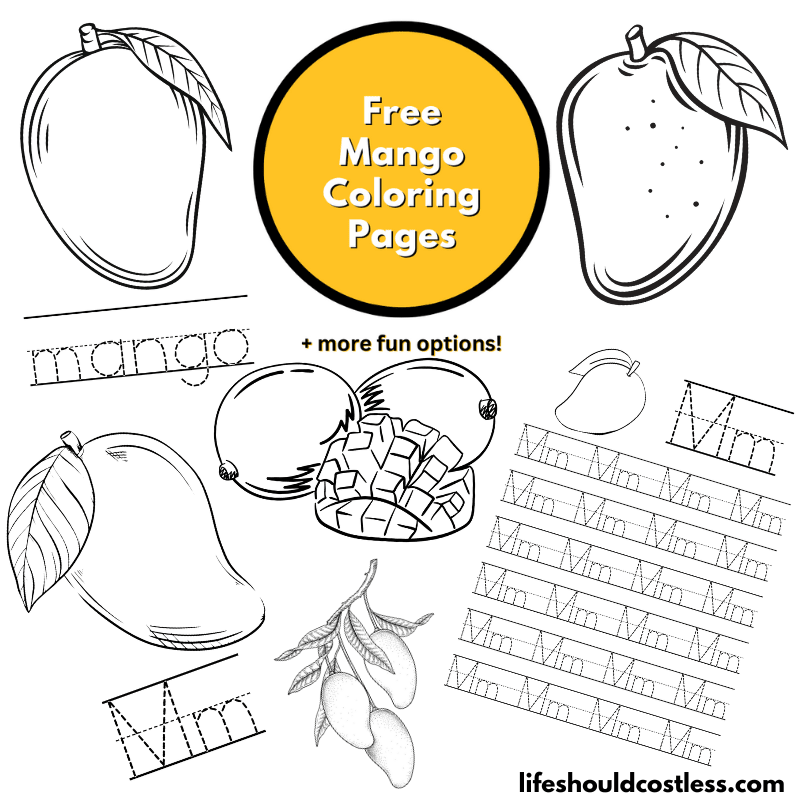
How To Follow & Support This Site
- If you would like to subscribe to my email list, go here.
- Make sure to follow along via social media, by going here.
- If you would like to learn how to really show your support to this site (at no cost to you), go here.
- If you would like to make a direct donation to the site, go here.
Check out my other free printables
- To see all of my free printables, go here.
- If you would like to see my index of free printable coloring pages, go here!
- All of my botanicals coloring pages are found here.
- Or, my other fruits coloring pages can be found here.
Otherwise, here are direct links to several of my other related posts that you’re also going to love:
Botanicals / Fruits
Botanicals / Floral & Misc
Other good resources for a printable mango
*This post was originally shared to this blog on 12/11/2023, and has since been updated to improve user experience, as well as to make it as shareable as possible across the social medias.
**Please note that I do try my hardest to provide factual, but easy to understand, information about each topic. If you notice a discrepancy in my coloring pages, facts, or see something that you deem “misinformation/incorrect” please make sure to notify me about it. I would prefer that you send me an email with a link to a more reputable resource on that subject, so that I can correct it as soon as possible. Thanks so much for helping this site become the best that it can be!
***Resources from djinkers were used in the production of this article.
***Resources from djinkers were used in the production of this article.
